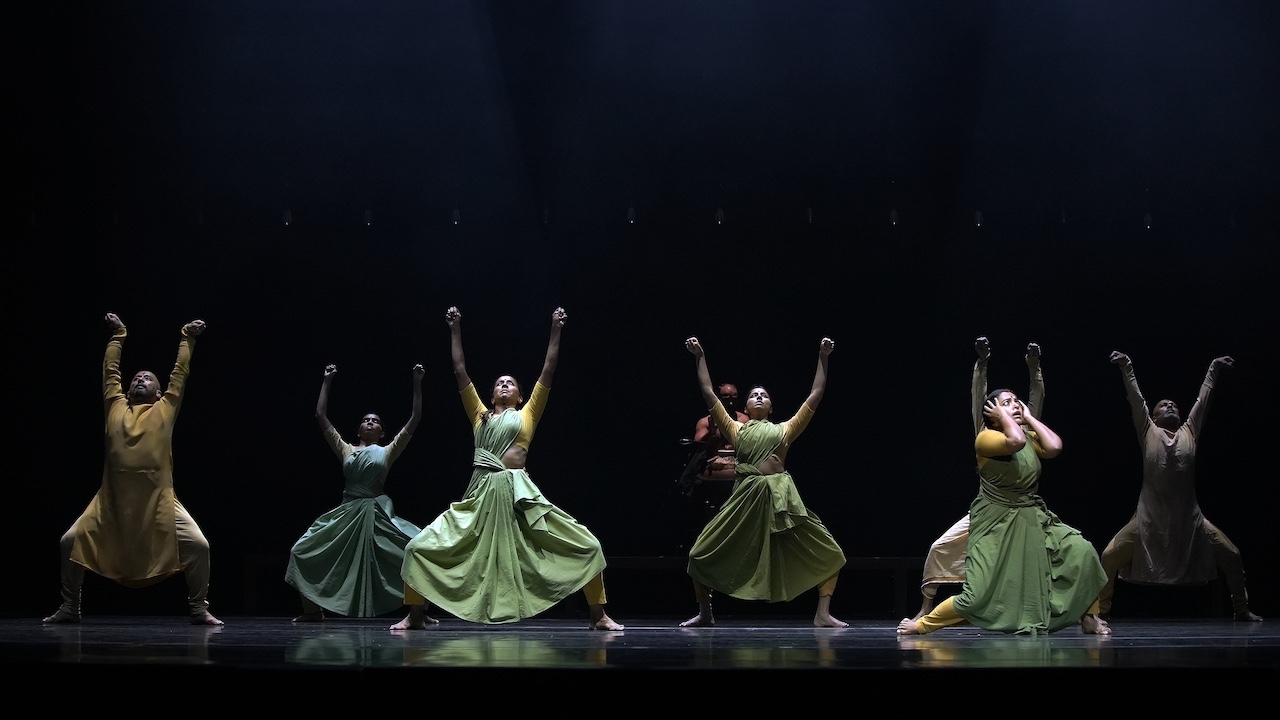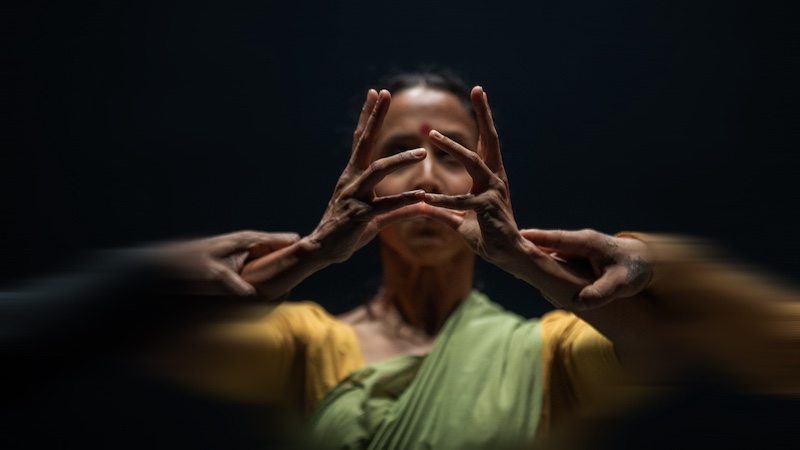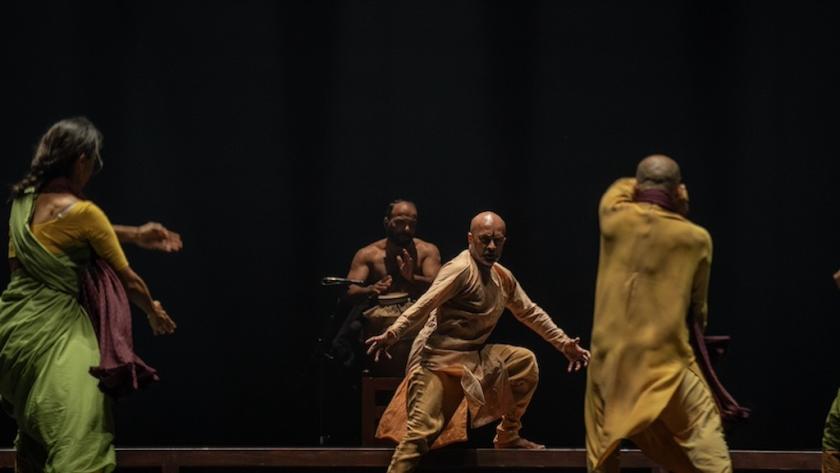London-born Akram Khan has come a long way in a 35-year career. He performed as a young teen in Peter Brook’s production of The Mahabharata, then progressed to dance training first in kathak then in contemporary dance. He then created his own company, forging alliances as a choreographer with the unlikeliest forces: English National Ballet, Juliette Binoche and Kylie Minogue. Four years ago he announced his retirement from the stage. Now, at 50, he’s back, unable to resist the siren call of his latest creation, GIGENIS: The Generation of the Earth. The capitalisation is typical Khan: he may be small of stature but he always thinks big, not to say monumental.
The title is Ancient Greek for giant or titan, but Khan takes his narrative themes – greed, loss, war and peace – from that great Indian epic The Mahabharata. Originally his piece was intended as a pure-dance celebration of star classical artistes from different Indian cities, in the vein of the festival that Khan, along with Malaysian dancer Mavin Khoo, curated in London a few years back. But it grew. The show that premiered in Aix-en-Provence this summer is a high-decibel blast of atmospheric theatre in which highly distinct dance forms – bharata natyam, kathak, odissi – find themselves chopped up and combined into a tasty but somewhat homogenised subcontinental soup.
 Khan’s six guest virtuosi are celebrities in their homeland but British audiences – including second-generation British Asians I dare to suggest – would no doubt benefit from a little tutoring in their specialisms. However, this isn’t Khan’s agenda. Cultural globalism is his thing. Hence the music of GIGENIS – performed live from both sides of the stage – makes as much a feature of violin and double bass as it does Mizhavu drumming and Carnatic song. As well as hearing lyrics in Bengali taken from poems by Rabindranath Tagore, you get soaring treble voices singing church Latin.
Khan’s six guest virtuosi are celebrities in their homeland but British audiences – including second-generation British Asians I dare to suggest – would no doubt benefit from a little tutoring in their specialisms. However, this isn’t Khan’s agenda. Cultural globalism is his thing. Hence the music of GIGENIS – performed live from both sides of the stage – makes as much a feature of violin and double bass as it does Mizhavu drumming and Carnatic song. As well as hearing lyrics in Bengali taken from poems by Rabindranath Tagore, you get soaring treble voices singing church Latin.
The narrative, such as it is, concerns a war widow with two sons, one of them (played by Khoo) peace-loving, the other (by Khan) a bundle of violent rage. When the latter goes to war against his brother, the mother reflects on her life and how this came to be. As played by Kapila Venu (pictured, right, above), a specialist in kutiyattam, an ancient living theatre tradition, the role becomes an all-encompassing earth mother. She’s giving birth not just to male children, but also to the story. As Venu spreads her thighs and opens her arms to the clangorous opening music, it’s as if she’s absorbing its energy to give the performance of a lifetime. What then issues from her body is the full gamut of wriggling, crawling, flapping, bud-bursting life on Planet Earth. It’s an extraordinary sequence, but you have to be alert to catch the detail, and quick to get the drift of this deeply impressionistic way of framing a narrative.
 Other terrific moments leap into focus: the agile fingers of Mythili Prakash (pictured above), fluttering like captured butterflies, or the gambolling duet between Renjith Babu and Vijna Vasudevan that brings a rare shaft of sunlight to the general sense of doomed humanity. Most accessible are the passages of group dance, six bodies leaping and swivelling in striking unison, arrow sharp. To his credit, Khan presents himself as an equal player in this company. He has too much respect for these virtuosi to do otherwise and they, for their part, clearly esteem Khan for his brave attempt to connect ancient stories with the present. This show has deep flaws – too much is unclear and it’s theatrically over-ambitious – but its sense of urgency in an imperilled world hits the mark.
Other terrific moments leap into focus: the agile fingers of Mythili Prakash (pictured above), fluttering like captured butterflies, or the gambolling duet between Renjith Babu and Vijna Vasudevan that brings a rare shaft of sunlight to the general sense of doomed humanity. Most accessible are the passages of group dance, six bodies leaping and swivelling in striking unison, arrow sharp. To his credit, Khan presents himself as an equal player in this company. He has too much respect for these virtuosi to do otherwise and they, for their part, clearly esteem Khan for his brave attempt to connect ancient stories with the present. This show has deep flaws – too much is unclear and it’s theatrically over-ambitious – but its sense of urgency in an imperilled world hits the mark.














Add comment